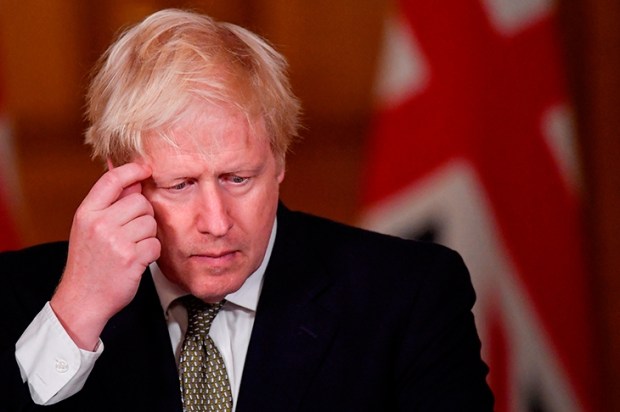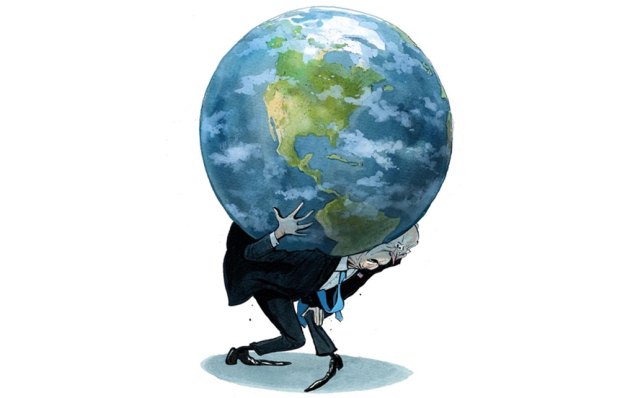The Office for Budget Responsibility was designed to protect the Chancellor from accusations that he is cooking the books. If the forecasts are prepared by an independent body, there can’t be the suggestion – as there often was before the OBR’s creation in 2010 – that they have been politically influenced. But what the OBR cannot do is eliminate uncertainty.
In recent years, the likely trajectory of the financial future changed quite a lot from one month to the next: from interest rates and inflation to the Covid pandemic and Russia’s invasion of Ukraine. The OBR itself admits that it had to conduct its work without knowing the full economic implications of the war. But it has cut its growth forecast for the UK economy anyway. There is growing expectation in Whitehall that we could be in for a prolonged conflict – with sanctions remaining in place for years – which means more downgrades are likely.
So Rishi Sunak has less flexibility than the headline numbers suggest. He will come under huge pressure to help families in the autumn if the energy price cap increases substantially in October, which it almost certainly will. Debt interest payments are almost four times what they were last year – a reminder of what rising interest rates and inflation can do to the public finances.
This uncertainty explains Sunak’s relative caution. He could have spent more (or taxed less) and stayed within his fiscal rules but instead he left himself some margin. If he lifted government budgets in line with inflation that would have cost £18 billion over the course of the parliament. Instead, Sunak has chosen to focus on some immediate tax cuts.
A 5p cut in fuel duty will not compensate people for the full price increase of petrol (currently 165p a litre, up from 125p a year ago) but it will offer some relief. Forecourt prices will be affected most of all by China’s ‘zero Covid’ strategy and whether the Saudis can be persuaded to pump more: a reminder of how much inflation is determined by things outside the government’s control.
In political terms, duty cuts work best when prices are static or falling; people notice a price cut more than prices not increasing by as much as they otherwise would have done. At the moment, oil prices have dropped from their recent high. They are, however, creeping up again as talk of an oil embargo on Russia grows.
The decision to equalise the starting point for National Insurance and income tax is more significant than the fuel duty cut. It means that more than two-thirds of workers will pay less National Insurance even after the increase (the so-called ‘health and social care levy’) comes in. The Tories will hope that the move will take the sting out of the criticism that the government is increasing taxes at a time when household incomes are already being squeezed by inflation.
In economic terms, there is also a benefit to raising the threshold rather than cancelling the NI tax rise. The beneficiaries of this decision are the lower-paid, so they are likely to have been hit hardest by inflation but also more likely to spend any money they are allowed to hold on to.
The Treasury’s aim with this policy is to square the circle between protecting workers from the tax rise while still creating a dedicated source of revenue to tackle the NHS backlog. Right now, one of the most obvious risks to the Tories’ re-election prospects is the fact that the NHS waiting list – already at a record six million – is expected to hit ten million next year and 11 million the year after.
This threshold equalisation between income tax and National Insurance concentrates tax relief where it is needed most. There are, though, dangers for the centre-right in taking more people out of direct taxation altogether. Those who don’t pay taxes will have less interest in voting for a low-tax party. A broad tax base with low rates is the ideal combination.
Sunak has also announced a cut in the basic rate of income tax for 2024, the first drop in the basic rate since the reduction to 20p announced by Gordon Brown in his last Budget in 2007. Cynics will be quick to suggest that there is a long way to go until 2024 and so the cut might not happen. But this is to ignore the politics. Perhaps the most likely date for the next election is May 2024. It would be bizarre, and electorally disastrous, for a government to announce that it intends to cut tax just before that date and then fail to do so. Sunak has lashed himself – and the government – to this mast. You can be certain that the Treasury will use the primacy of this tax cut to knock back various demands for extra spending in the next two years.
The decision to remove VAT (mainly charged at 5 per cent) from various energy products such as solar panels, heat pumps and insulation is a sensible post-Brexit move and another small example of the benefits of a country being in control of its own regulation. But the most important factor in determining Britain’s future is whether the business tax changes Sunak is looking at can remedy the UK’s productivity problem. In the 30 years before the financial crash, productivity grew by an average of 2.2 per cent a year. Since 2008 it has grown at an average of a negligible 0.4 per cent a year – which, in turn, keeps salaries low. If this problem cannot be fixed, then the UK will face a series of ever more unappealing policy choices when it comes to the public finances.
Sunak’s plan is to create a tax regime that does a better job at incentivising businesses to invest in the skills of their workforce, research and development and capital projects. He is hardly the first chancellor to puzzle over the UK’s productivity problem. But he must be more successful than his predecessors if the UK is to retain its influence in the world.
Got something to add? Join the discussion and comment below.
Get 10 issues for just $10
Subscribe to The Spectator Australia today for the next 10 magazine issues, plus full online access, for just $10.
You might disagree with half of it, but you’ll enjoy reading all of it. Try your first month for free, then just $2 a week for the remainder of your first year.















Comments
Don't miss out
Join the conversation with other Spectator Australia readers. Subscribe to leave a comment.
SUBSCRIBEAlready a subscriber? Log in